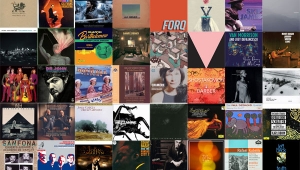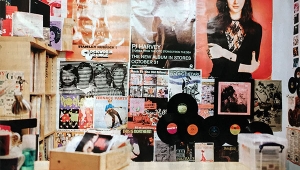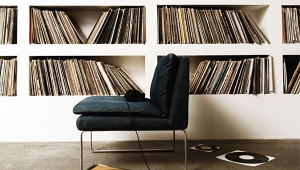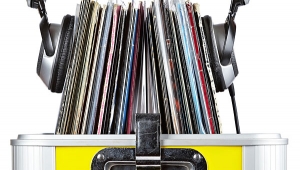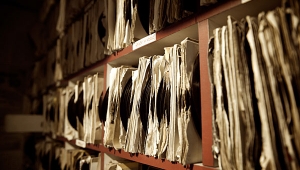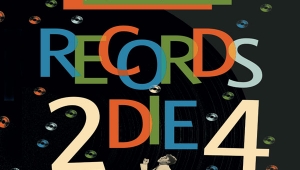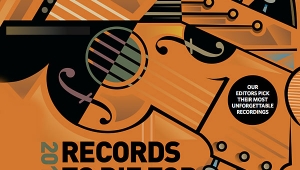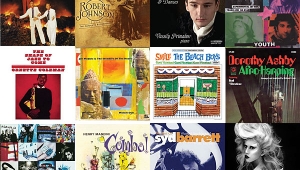| Columns Retired Columns & Blogs |
1997 Records To Die For Page 10
Wes Phillips
JAMES BROWN: Live and Lowdown at the Apollo, Vol.1
Solid Smoke 8006 (LP). 1962 AAA.
A banner stretching across the bottom of the Solid Smoke reissue (my King original was nearly totally flayed of its grooves through constant play more than 20 years ago) proclaims this to be the greatest live show ever recorded. Who am I to argue?
DUKE ELLINGTON: The Ellington Suites
Duke Ellington, piano; Clark Terry, Cat Anderson, Shorty Baker, Ray Nance, Cootie Williams, Mercer Ellington, Money Johnson, Johnny Coles, trumpet; Britt Woodman, Quenton Jackson, John Sanders, Booty Wood, Vince Prudente, Chuck Connors, trombone; Johnny Hodges, Jimmy Hamilton, Paul Gonsalves, Russell Procope, Harold Minerve, Norris Turney, Harold Ashby, Russ Andrews, Harry Carney, woodwinds; Jimmy Woode, Joe Benjamin, bass; Jimmy Johnson, Rufus Jones, drums
Pablo 2310-732 (LP). 1958. Duke Ellington, prod. AAA.
For me to choose just one Ellington record is akin to being asked that I save my favorite finger---I don't rightly have any I feel I could do without. But I do return, time and again, to The Queen's Suite. In 1958, Ellington took his orchestra to an arts festival in Leeds. There, he was introduced to Queen Elizabeth at a reception, and each party appeared to be charmed by the other. Upon his return to New York, Ellington decided to express his admiration in his own regal way---he recorded The Queen's Suite at his own expense and had a single pressing made and delivered to Buckingham Palace. He never sanctioned the recording's release during his lifetime.
THE NEW MUSIC CONSORT: Pulse: Works for Percussion & Strings
Music of Cage, Cowell, Harrison, Crawford Seeger
New World/Classic NW/NWCD 319 (LP/CD). 1985. Elizabeth Ostrow, prod.; Anthony Salvatore, eng. AAA/AAD. TT: 35:31
Henry Cowell was the first American composer to advocate both unorthodox instrumental techniques and the assimilation of non-Western cultural influences in his music. These compositional trademarks became strong influences on much of the music of Cowell's two most famous students, John Cage and Lou Harrison. Following Edgard Varèse's footsteps, Cage began, in the late 1930s, to compose for his own percussion ensemble works, which drew heavily on Asian music and freely used an unorthodox battery of Western and Eastern percussion instruments. Cage's Third Construction and Cowell's Pulse, both written for Cage's ensemble, date from this period, and were featured on a spectacular 1985 New World recording by the New Music Consort. The performances on this sonic blockbuster (the percussion pieces test a system's transient, dynamic, and soundstaging capabilities) are riveting; it's difficult to listen to the unusually accessible Cage without dancing around the room. Classic Records has now reissued the recording on vinyl and gold CD. When comparing the reissue to the original vinyl, I preferred the sound of the reissue slightly for its quieter vinyl. And Classic's gold CD sounds damn close to their vinyl. This reissue is a must-buy for anyone remotely interested in 20th-century or percussion music. (XIX-9)
DAVID CHESKY: The Fantasies
Chesky JD139 (CD only). 1996. David Chesky, prod.; Bob Katz, eng. DDD. ???. TT: 69:09
I am particularly enamored with works by "young" composers who are not afraid to incorporate their life experiences with nonclassical forms into their music, whether it's jazz, rock, or ethnic folk music. Take David Chesky, for example. Although Chesky is most known in audio-geek circles as a reissuer of classical audiophile warhorses as well as a promoter of accessible Latin pop music, those activities serve the purpose of putting food on the Chesky table. Deep down, his first passion is classical composition. And this collection of slow piano works draw as much from jazz (eg, Keith Jarrett) and strict Latin musical forms as from the influences of Gershwin, Ravel, and Bach. Chesky remains in the strict tradition of piano fantasies composed through the last two centuries---the pieces embody total freedom of expression, and provide a platform to demonstrate technical virtuosity and improvisatory skill. I approached these pieces first by performing them via the score, then by listening to the recording. I was at once taken by Chesky's use of unorthodox, dark harmonic tensions in the lower register, dazzling arpeggiated sweeps, polychromaticism, and rapidly shifting meters and phrasing as reminiscent of John Zorn as of Scriabin. Sonically, Chesky's Bösendorfer is produced with intimacy, warmth, and drama, albeit with a slightly dark perspective.

George Reisch
J.S. BACH: Cantatas 78 & 106
No.78, "Jesu, der du meine Seele"; No.106, "Gottes Zeit ist die allerbeste Zeit, "Actus tragicus"
Edith Mathis, soprano; Sybil Michelow, alto; Theo Altmeyer, tenor; Franz Crass, bass; South German Madrigal Choir, Consortium Musicum, Wolfgang Gönenwein
Angel 36354 (LP, nla). AAA.
They say moving to a new home is as trying as a death in the family. Since I'm surrounded by boxes, and since this is "Records To Die For," my selections have a rather morbid tone. This Angel blue-label LP from the mid-'60s (I estimate) is a sonic delight, and my current benchmark for Bach cantatas. Crass is particularly effective. His "Heute, heute, wirst du mit mir" in No.106 is spectacular. As he's contemplating his imminent death and salvation---"today, today, you [God] shall be with me"---the chorus emerges from the soundstage to wrap around him in a beautiful, God-like embrace. Another winner is No.78's soprano/alto duet: Mathis and Michelow swoop and soar like synchronized doves. The recording seems multimiked, but it's smooth, not too compressed, and spacious.
JOY DIVISION: Closer
Factory Factus 6 (LP), Qwest 25841-2 (CD). 1980/1989. Martin Hannett, prod. Martin Hannett and John Caffery, eng. AAA/AAD.
Closer was recorded in 1980, shortly before JD's leader, Ian Curtis, committed suicide. (They've since worked as New Order.) Not surprisingly, Closer plays like a guided tour into the abyss. Surprisingly, it works. Unlike their many imitators (Trent Reznor probably got through high school on this album---and then stole its title), Joy Division is believable. Curtis was not posing when he wrestled with life's Darwinian, existential underside. "Atrocity Exhibition" is about deformity and monstrosity ("For entertainment they watch his body twist...") and why we love it ("...behind his eyes he says I still exist"). By side two, we're looking at the other side of the mirror, only to find nothing but ourselves. Curtis struggles against psychic fragmentation ("Heart and soul, one will burn"), and drags us finally into "hell's darker chambers," where we watch "the scenes [of our lives] replaying." Curtis could not stand what he saw, but he must have loved what he heard.
JAMES BROWN: Live and Lowdown at the Apollo, Vol.1
Solid Smoke 8006 (LP). 1962 AAA.
A banner stretching across the bottom of the Solid Smoke reissue (my King original was nearly totally flayed of its grooves through constant play more than 20 years ago) proclaims this to be the greatest live show ever recorded. Who am I to argue?
From the MC's exhortation of the crowd ("Now, ladies and gennlemen, national and international known as the hardest working man in show bidness...") to the final audience accolade, this record re-creates the excitement and superlative musicianship---and, above all, showmanship---that personified the Godfather of Soul before the schtick began to harden. Other people may fantasize about traveling back in time to post-war Paris or turn-of-the-century Vienna---I'd give anything to have been in Harlem this October evening in 1962. Live and Lowdown takes me nearly all the way there.
DUKE ELLINGTON: The Ellington Suites
Duke Ellington, piano; Clark Terry, Cat Anderson, Shorty Baker, Ray Nance, Cootie Williams, Mercer Ellington, Money Johnson, Johnny Coles, trumpet; Britt Woodman, Quenton Jackson, John Sanders, Booty Wood, Vince Prudente, Chuck Connors, trombone; Johnny Hodges, Jimmy Hamilton, Paul Gonsalves, Russell Procope, Harold Minerve, Norris Turney, Harold Ashby, Russ Andrews, Harry Carney, woodwinds; Jimmy Woode, Joe Benjamin, bass; Jimmy Johnson, Rufus Jones, drums
Pablo 2310-732 (LP). 1958. Duke Ellington, prod. AAA.
For me to choose just one Ellington record is akin to being asked that I save my favorite finger---I don't rightly have any I feel I could do without. But I do return, time and again, to The Queen's Suite. In 1958, Ellington took his orchestra to an arts festival in Leeds. There, he was introduced to Queen Elizabeth at a reception, and each party appeared to be charmed by the other. Upon his return to New York, Ellington decided to express his admiration in his own regal way---he recorded The Queen's Suite at his own expense and had a single pressing made and delivered to Buckingham Palace. He never sanctioned the recording's release during his lifetime.
In his autobiography, Ellington stated that The Queen's Suite was modeled after six of the most beautiful moments in his life. Certainly the writing, arranging, and playing personify beauty and wonder. It would be hard to point to a single defining moment, but the duet between Ellington and bassist Jimmy Wood---"The Single Petal of a Rose"---is both personal and passionate.
Side 2 has an additional pair of suites recorded in the early '70s. They're all right, but all of the magic resides on side 1. ![]()
Robert J. Reina
THE NEW MUSIC CONSORT: Pulse: Works for Percussion & Strings
Music of Cage, Cowell, Harrison, Crawford Seeger
New World/Classic NW/NWCD 319 (LP/CD). 1985. Elizabeth Ostrow, prod.; Anthony Salvatore, eng. AAA/AAD. TT: 35:31
Henry Cowell was the first American composer to advocate both unorthodox instrumental techniques and the assimilation of non-Western cultural influences in his music. These compositional trademarks became strong influences on much of the music of Cowell's two most famous students, John Cage and Lou Harrison. Following Edgard Varèse's footsteps, Cage began, in the late 1930s, to compose for his own percussion ensemble works, which drew heavily on Asian music and freely used an unorthodox battery of Western and Eastern percussion instruments. Cage's Third Construction and Cowell's Pulse, both written for Cage's ensemble, date from this period, and were featured on a spectacular 1985 New World recording by the New Music Consort. The performances on this sonic blockbuster (the percussion pieces test a system's transient, dynamic, and soundstaging capabilities) are riveting; it's difficult to listen to the unusually accessible Cage without dancing around the room. Classic Records has now reissued the recording on vinyl and gold CD. When comparing the reissue to the original vinyl, I preferred the sound of the reissue slightly for its quieter vinyl. And Classic's gold CD sounds damn close to their vinyl. This reissue is a must-buy for anyone remotely interested in 20th-century or percussion music. (XIX-9)
DAVID CHESKY: The Fantasies
Chesky JD139 (CD only). 1996. David Chesky, prod.; Bob Katz, eng. DDD. ???. TT: 69:09
I am particularly enamored with works by "young" composers who are not afraid to incorporate their life experiences with nonclassical forms into their music, whether it's jazz, rock, or ethnic folk music. Take David Chesky, for example. Although Chesky is most known in audio-geek circles as a reissuer of classical audiophile warhorses as well as a promoter of accessible Latin pop music, those activities serve the purpose of putting food on the Chesky table. Deep down, his first passion is classical composition. And this collection of slow piano works draw as much from jazz (eg, Keith Jarrett) and strict Latin musical forms as from the influences of Gershwin, Ravel, and Bach. Chesky remains in the strict tradition of piano fantasies composed through the last two centuries---the pieces embody total freedom of expression, and provide a platform to demonstrate technical virtuosity and improvisatory skill. I approached these pieces first by performing them via the score, then by listening to the recording. I was at once taken by Chesky's use of unorthodox, dark harmonic tensions in the lower register, dazzling arpeggiated sweeps, polychromaticism, and rapidly shifting meters and phrasing as reminiscent of John Zorn as of Scriabin. Sonically, Chesky's Bösendorfer is produced with intimacy, warmth, and drama, albeit with a slightly dark perspective.
George Reisch
J.S. BACH: Cantatas 78 & 106
No.78, "Jesu, der du meine Seele"; No.106, "Gottes Zeit ist die allerbeste Zeit, "Actus tragicus"
Edith Mathis, soprano; Sybil Michelow, alto; Theo Altmeyer, tenor; Franz Crass, bass; South German Madrigal Choir, Consortium Musicum, Wolfgang Gönenwein
Angel 36354 (LP, nla). AAA.
They say moving to a new home is as trying as a death in the family. Since I'm surrounded by boxes, and since this is "Records To Die For," my selections have a rather morbid tone. This Angel blue-label LP from the mid-'60s (I estimate) is a sonic delight, and my current benchmark for Bach cantatas. Crass is particularly effective. His "Heute, heute, wirst du mit mir" in No.106 is spectacular. As he's contemplating his imminent death and salvation---"today, today, you [God] shall be with me"---the chorus emerges from the soundstage to wrap around him in a beautiful, God-like embrace. Another winner is No.78's soprano/alto duet: Mathis and Michelow swoop and soar like synchronized doves. The recording seems multimiked, but it's smooth, not too compressed, and spacious.
JOY DIVISION: Closer
Factory Factus 6 (LP), Qwest 25841-2 (CD). 1980/1989. Martin Hannett, prod. Martin Hannett and John Caffery, eng. AAA/AAD.
Closer was recorded in 1980, shortly before JD's leader, Ian Curtis, committed suicide. (They've since worked as New Order.) Not surprisingly, Closer plays like a guided tour into the abyss. Surprisingly, it works. Unlike their many imitators (Trent Reznor probably got through high school on this album---and then stole its title), Joy Division is believable. Curtis was not posing when he wrestled with life's Darwinian, existential underside. "Atrocity Exhibition" is about deformity and monstrosity ("For entertainment they watch his body twist...") and why we love it ("...behind his eyes he says I still exist"). By side two, we're looking at the other side of the mirror, only to find nothing but ourselves. Curtis struggles against psychic fragmentation ("Heart and soul, one will burn"), and drags us finally into "hell's darker chambers," where we watch "the scenes [of our lives] replaying." Curtis could not stand what he saw, but he must have loved what he heard.
Hannett used all the tricks of his trade to turn JD's simple arrangements into shimmering, elegant productions. Even on my US LP release (I'd love to hear the UK equivalent), they jump out of the speakers and---like Curtis's visions---dance into the room. ![]()
- Log in or register to post comments





